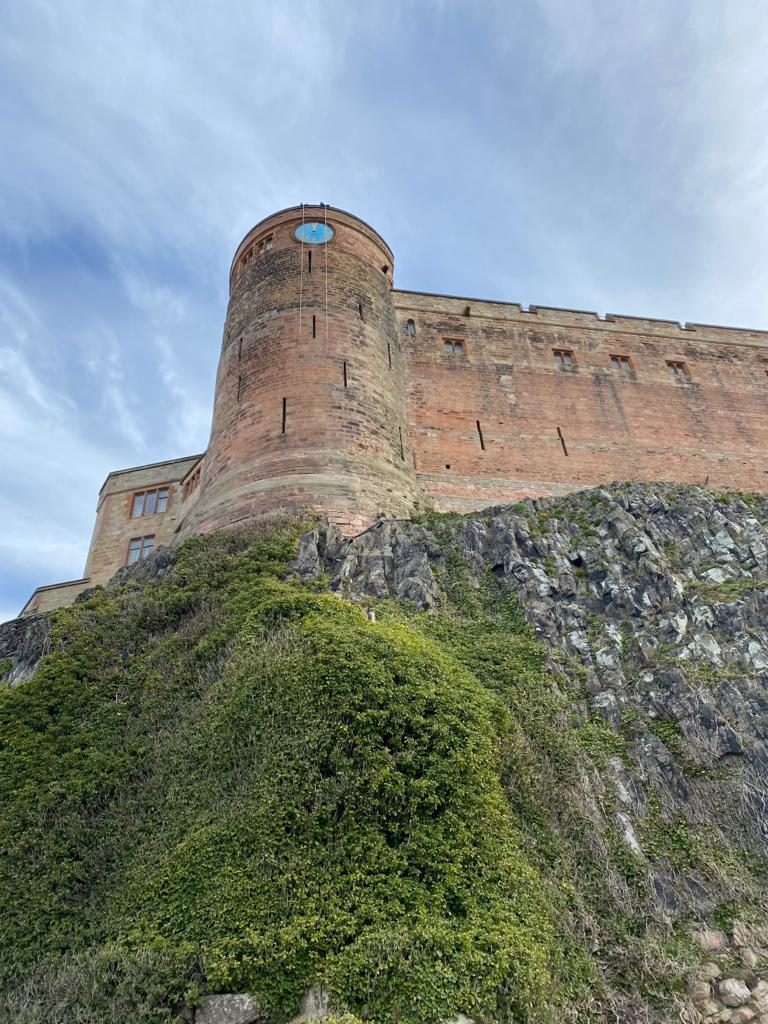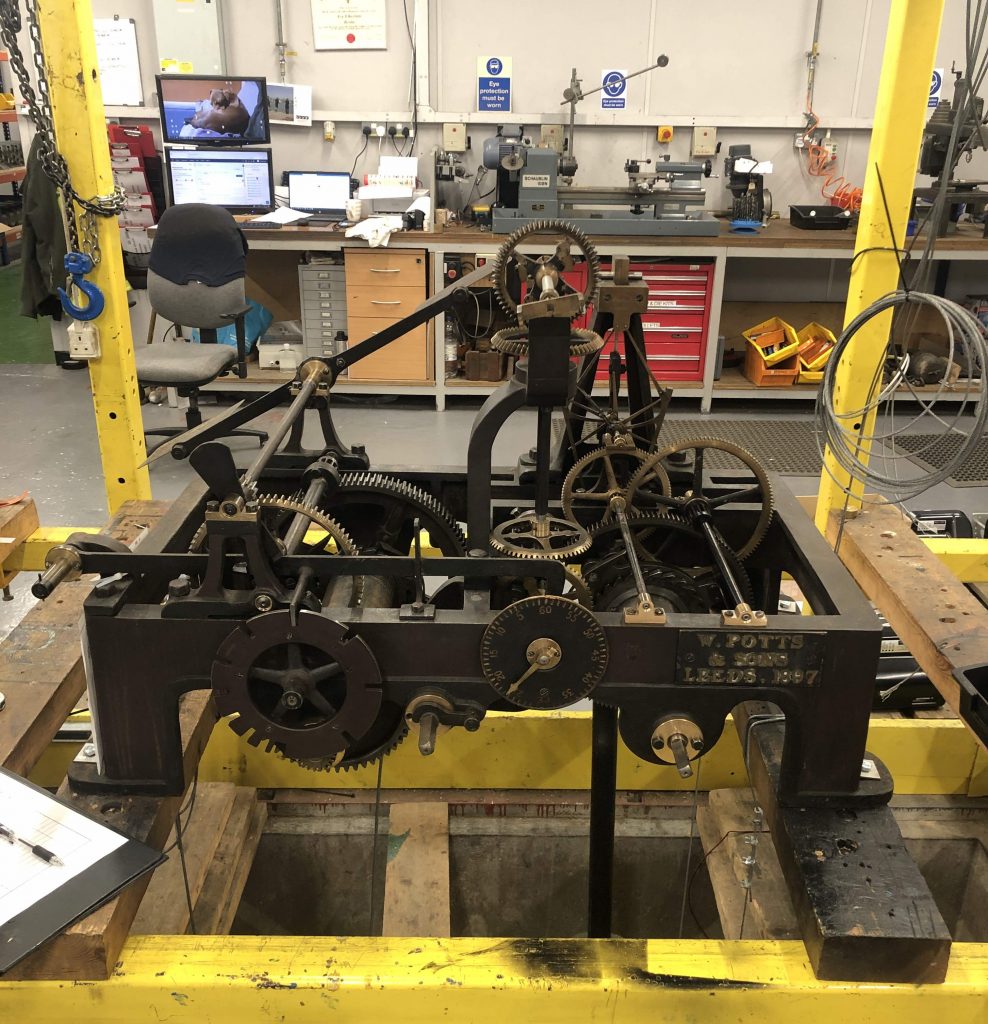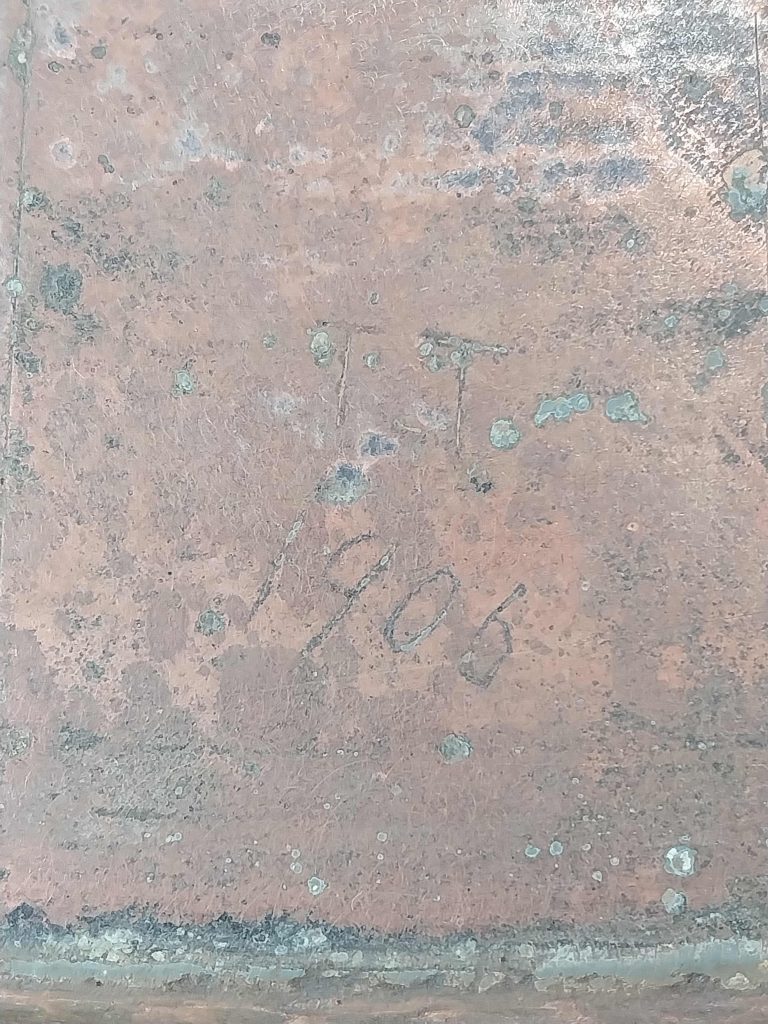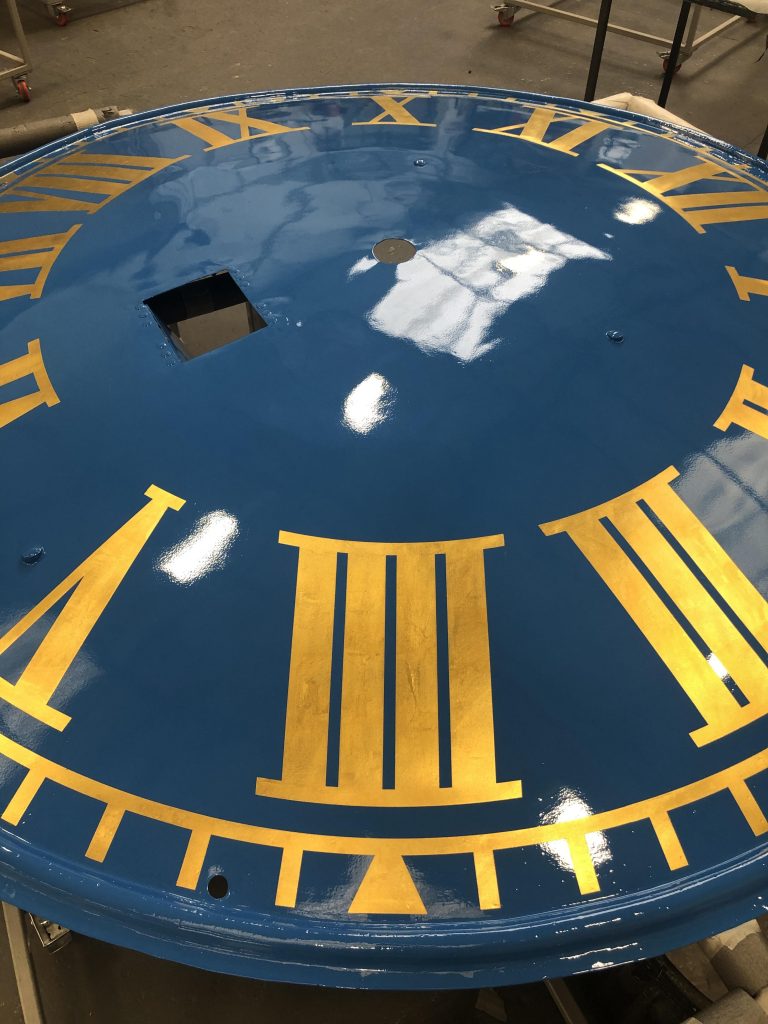Bamburgh Castle Dials – Work In Progress
We’ve been enjoying stripping the old paint from this beautiful dial and taking it back to bare copper as part of the restoration process to the two dials from Bamburgh Castle in Northumberland.

The Bamburgh Castle Clock is a William Potts of Leeds made in 1897. To get it to our Derby Clockworks for a full repair and restoration, our team lowered the clock by hoist through the tower’s trap door to ground level.

We have re-Bushed the Going Side, and stripped, re-pinned and re-bushed all three pulleys. The four bevel sets have been stripped, cleaned and painted together with both sets of dial works and together with this the connecting rods have been straightened and new pins added where necessary. Additionally, the hands have been repaired, balanced sprayed and re-gilded, and the dials restored.

Beginning with paint stripper, Phil sanded back the various layers of paint – most likely added over the top of previous layers by painters on several occasions hanging by rope access – to reveal the copper base. Kelly has then worked to remove the verdigris build-up caused by the oxidation of the copper, using a combination of lemon juice, bicarbonate of soda and white vinegar. This revealed the fantastic surface we needed to get to in order to provide a stable condition to begin the painting process. An etch primer is put down first, followed by high build filler and then three coats of RAL 5015 (or ‘Sky Blue’) paint.
A couple of interesting details were discovered as part of the restoration process; the first being likely marks of graffiti reading ‘T.T. 1906’, perhaps added by one of the earlier painters of the dial who knew they could leave the etched mark intact while painting over it.

Another notable detail is the small hatch which we don’t know for sure, but think was likely added a few years after the dial was installed. Our guess it that is was used as a means of allowing tools to be passed from one clockmaker inside the clock tower to another outside on the ropes, allowing fewer tools to be carried by the clockmaker on the outside who already had enough on their mind give the drop below them. We can tell the hatch was not original to the design as it cuts -off numerals which had been marked on the dial reading AD 18_ _.

The clock has been on test for a month and is ready for reinstallation. It’s been a hugely enjoyable project to work on and a real team effort.